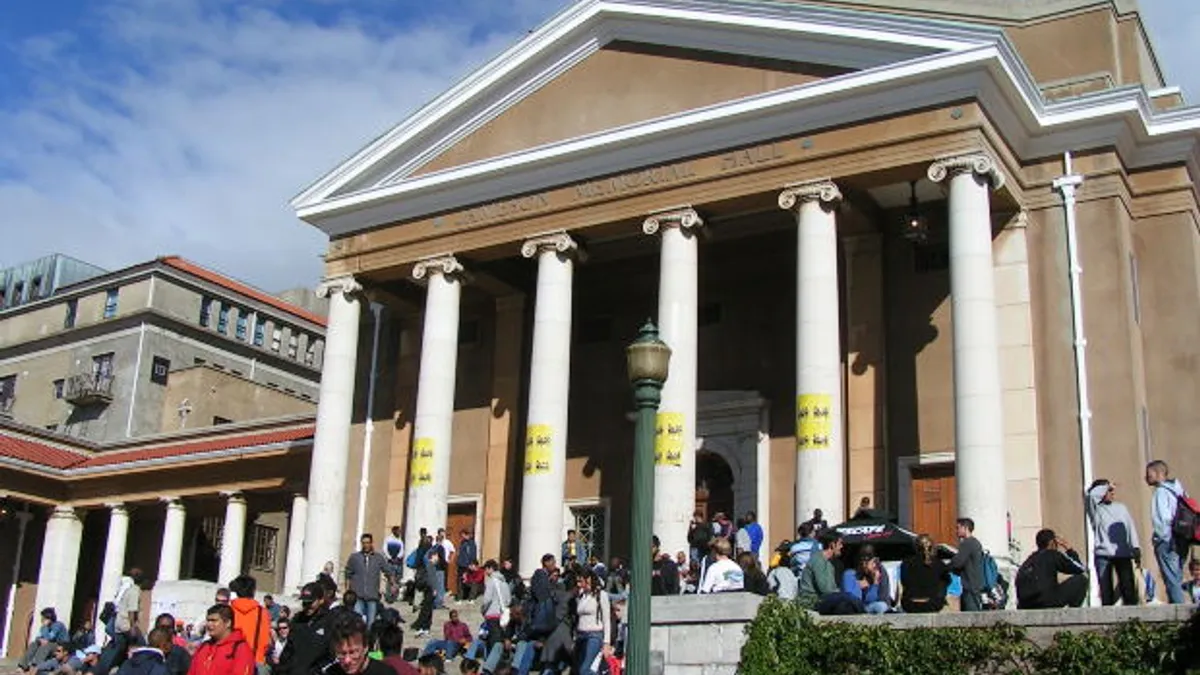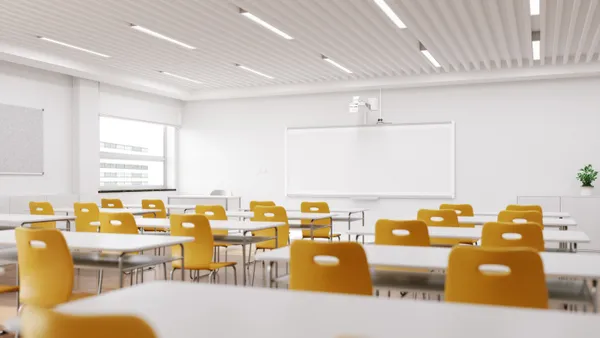Dive Brief:
- The Georgetown University Center on Education and the Workforce estimated that one-third of nation’s top-performing high school students do not obtain a college degree, though nearly all of these students attempt college. However, top-scoring students tend to graduate at a rate of more than 80% when attending a selective institution, according to the center.
- Top high school students were identified by the center's researchers as those who score over 1,000 on the SAT. These college-ready students who did not complete a degree represent 15% to 17% of the high school class — 5 million students per decade, or nearly half of the estimated 11 million needed to close the workforce gaps over the next decade. These "forgotten" students were spread evenly across race and class.
- The current incompletion rate could have significant ramifications for the workforce. At a cost of $5,000 per student, interventions in the areas of academic and financial aid counseling, work exposure and credit transfers between schools could move a high number of these college-ready students toward college completion.
Dive Insight:
As many states look to tie public funding to certain institutional outcomes like completion rates, higher education leaders must understand why students don’t finish college with more precision. Previous research has suggested that some students don’t complete degrees because they are unprepared for college-level work. A Hechinger Report investigation last year found that a high number of college enrollees were placed in remedial classes. Students enrolled in remedial classes are more likely not to obtain a degree as remedial coursework can take away valuable time and focus from work that counts toward a degree.
However, if high-performing students are also running into serious barriers toward college completion, leaders should look more intensely at that range of non-academic reasons students dropout of college. High costs of living factor into the cost of attendance, separate from just tuition costs, are often barriers for students. In some cases, students have been said to miss class, fall behind and even drop out over such seemingly small things as not having money to put gas in their cars to drive to class.
In other cases, students may need to choose between caring for a sick family member or attending class. Florida presidents have recently been vocal against a proposal to tie funding to the number of full-time enrollees, saying students may go back and forth between full-time and part-time status, thanks to a number of other demands on their time as they juggle jobs and families. And some researchers are noting that looking at the number of consecutive semesters, not number of credits students take each semester, is the best indicator of persistence.













